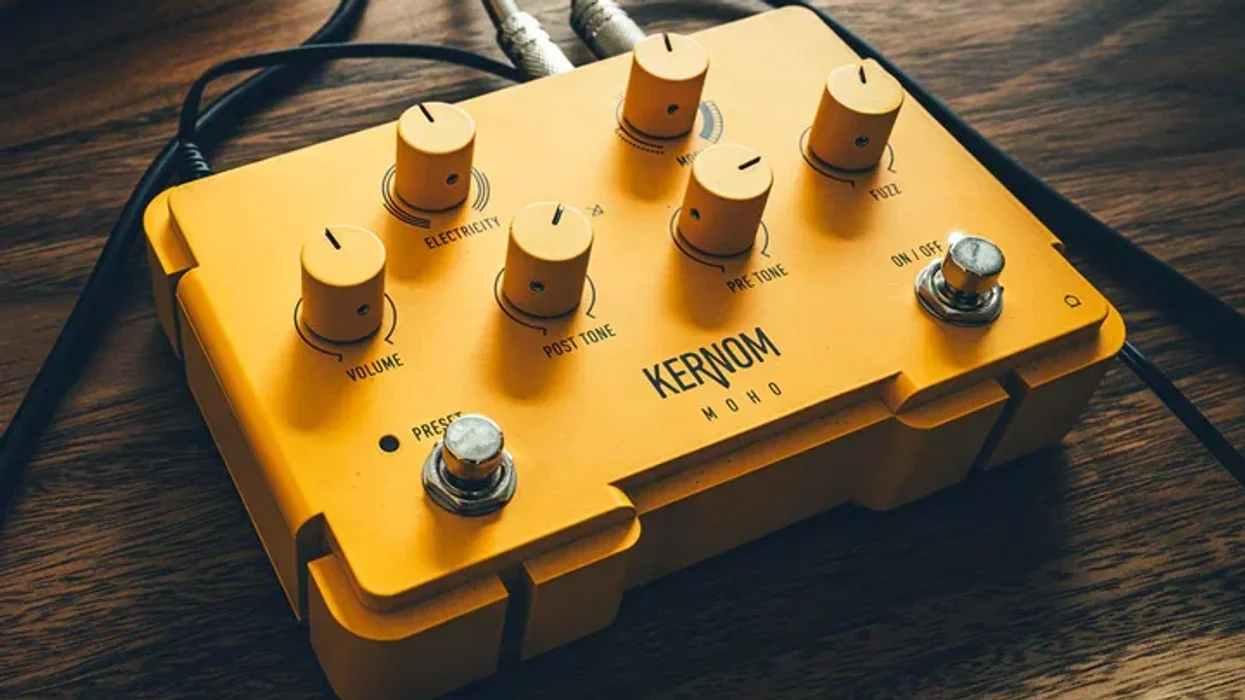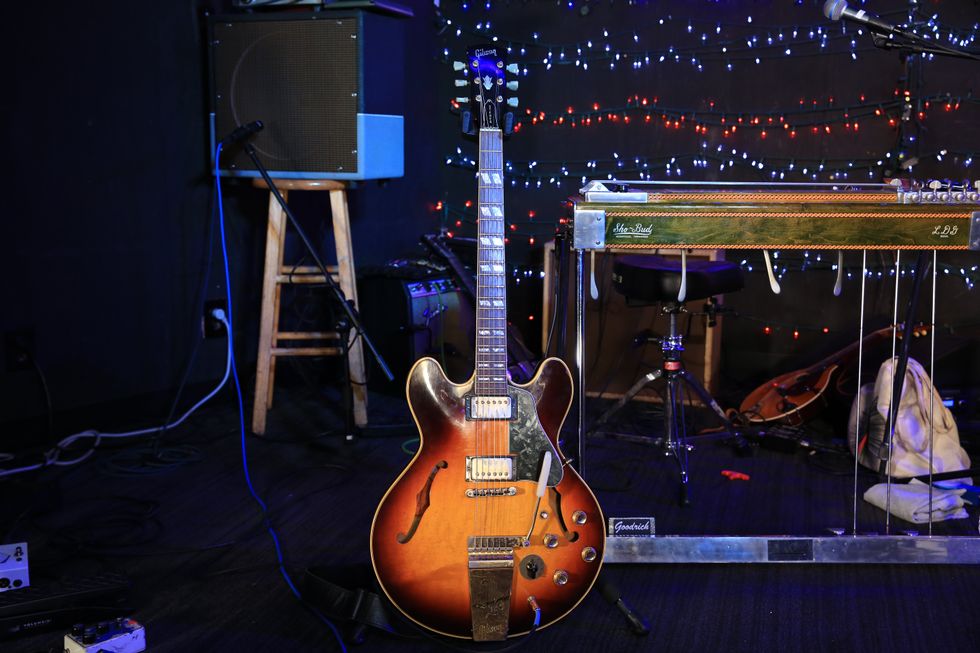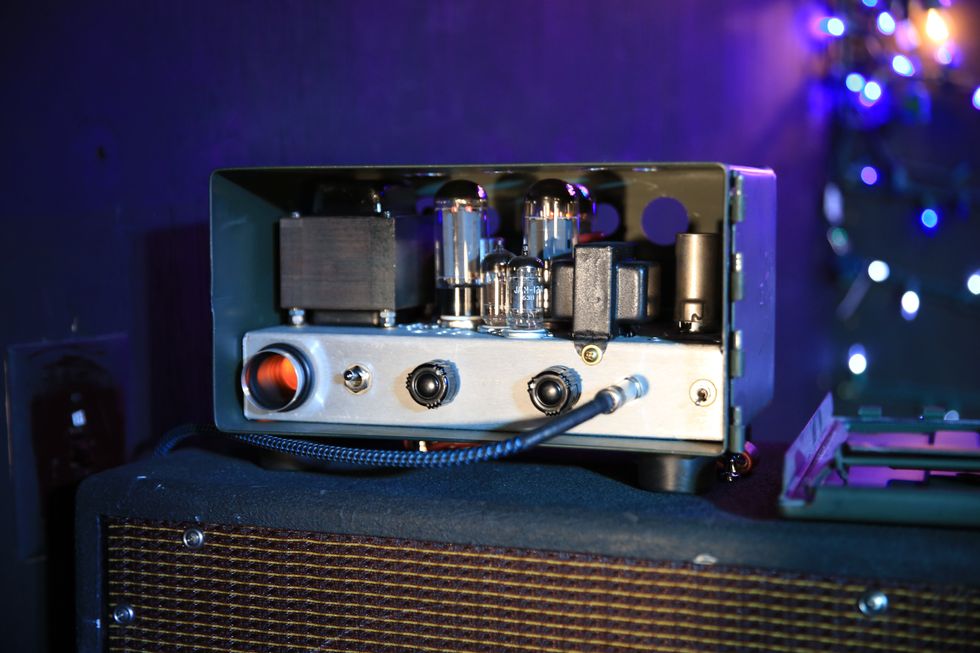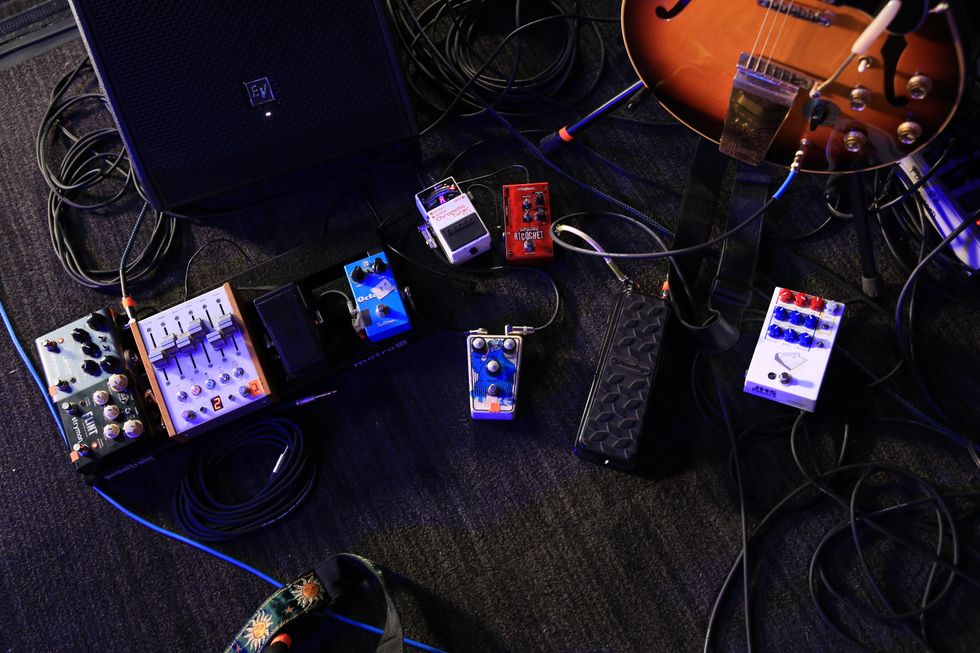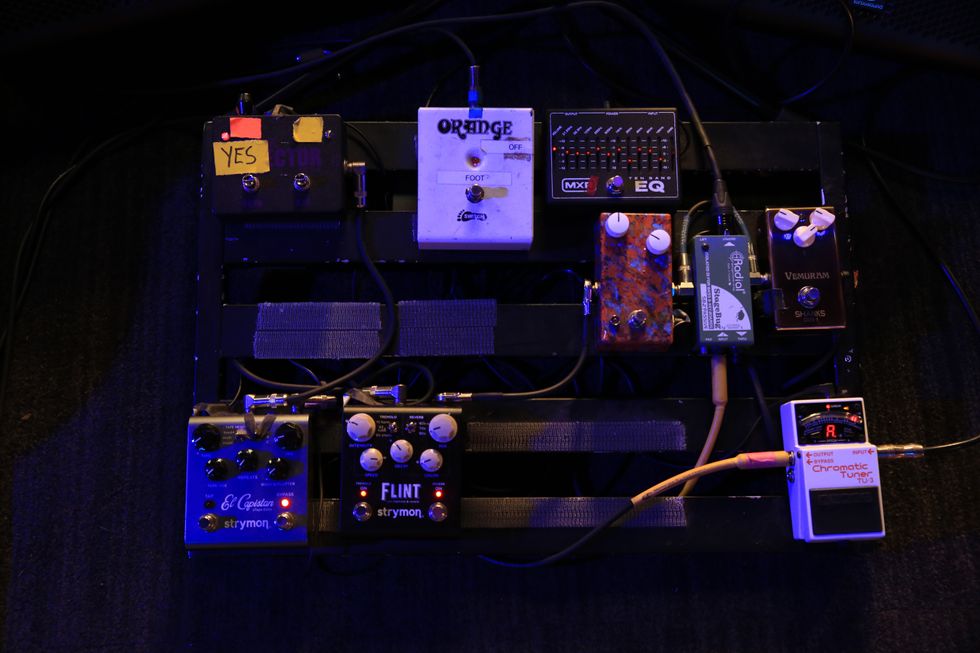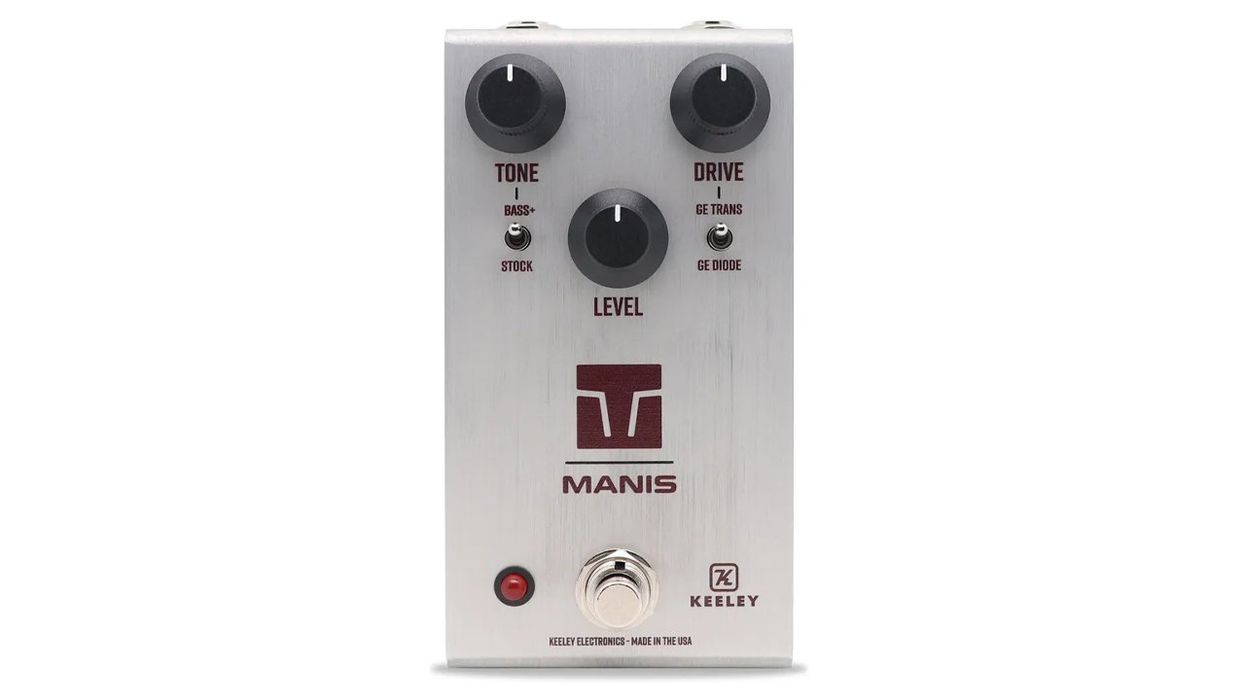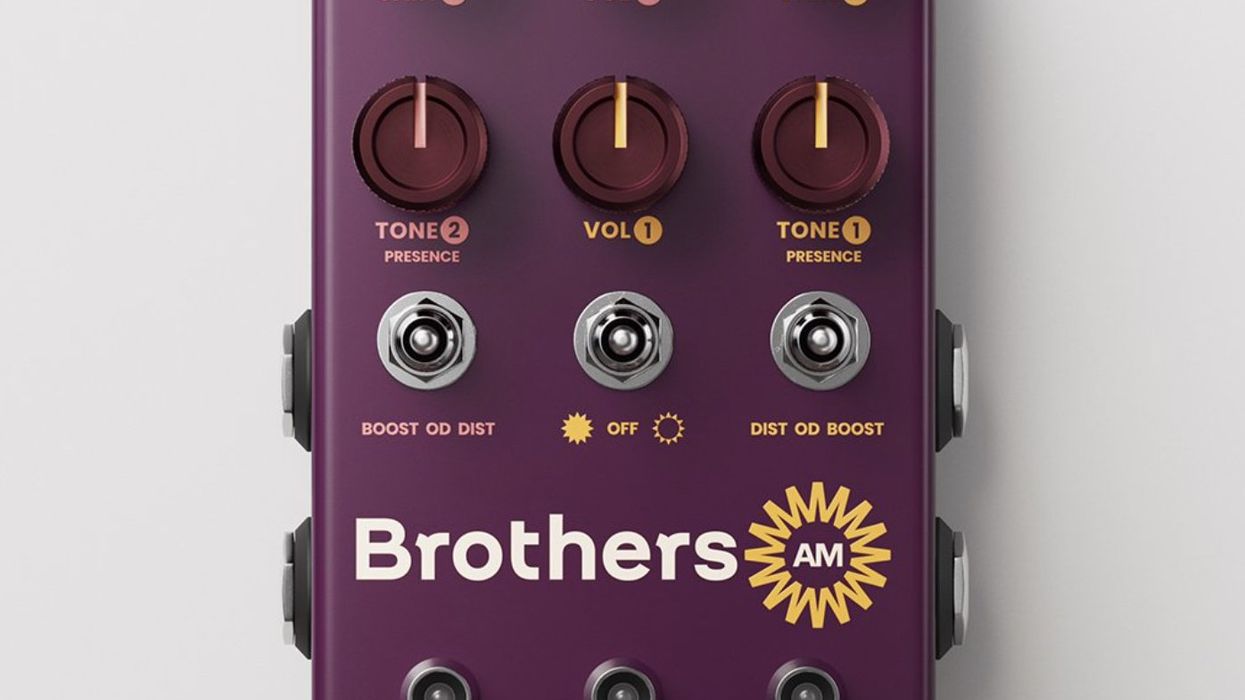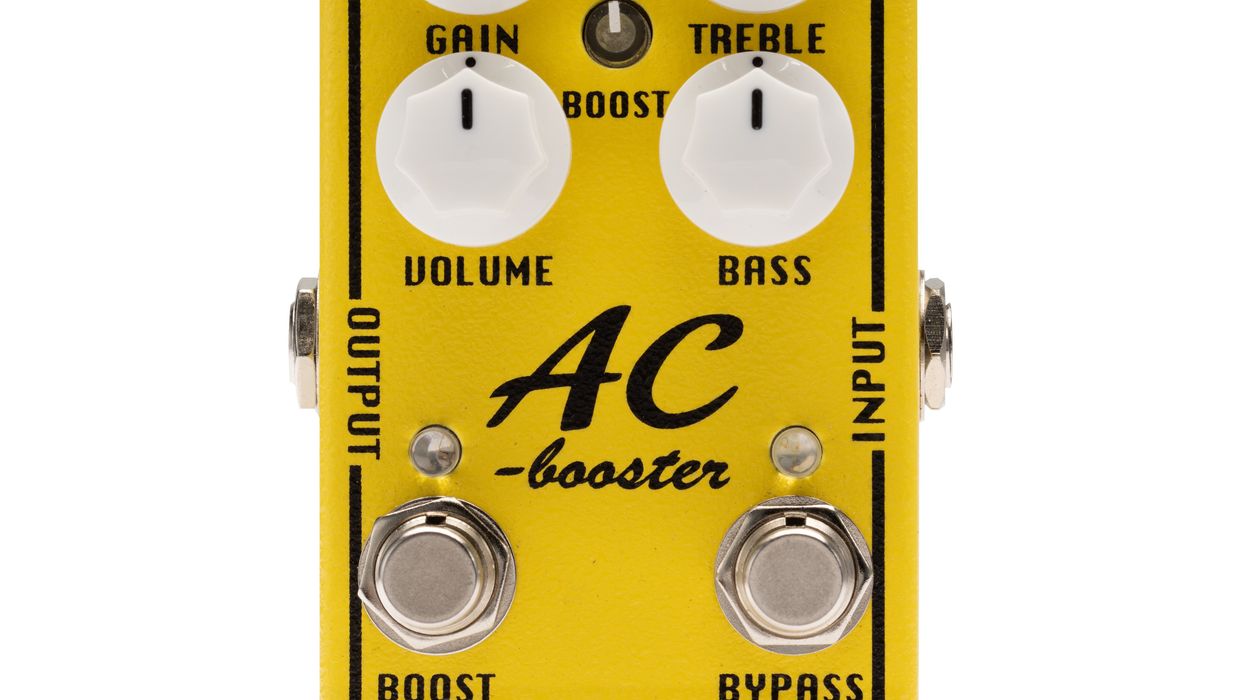Do you prefer your pedals simple or complex? A few idiot-proof knobs, or a sprawling sound lab?
Source Audio’s pedals have traditionally fallen into category B. But the company’s new One Series bucks “for geeks only” stereotypes. Take Vertigo Tremolo: It’s at least as powerful as past Source modulation pedals, yet it should please the idiot-proofers. Its hardware interface is no more complex than, say, your typical Boss box. But you can dive way deeper by connecting to Source’s free Neuro app (for iOS and Android) and other editing tools.
Vertigo can do extraordinary tricks, but let’s consider it first in idiot-proof mode. What happens when you plug in without cracking the manual or synching to other devices?
frickin’ amp trem.
Simple Shakes
Vertigo lives in a B-sized enclosure with a extruded aluminum lid. The layout is simple: rate and depth controls, and a wave-shape pot to fade between square, sine, and sawtooth modulation. (That means smooth throb in the center position and alternate flavors of chop to either side.) There’s also a volume control—an often-omitted essential. (You need about a +3dB boost when engaging a trem to avoid a perceived energy drop.) There’s no battery option—you must plug in (adapter included). One problem: the low-contrast labels are difficult to read in less-than-perfect lighting, let alone on dark stages.
Meanwhile, the toggle selects between the three classic amp tremolo modes: normal (blackface-style optical trem), harmonic (the phasy, two-tube brownface sound), and bias (that hypnotic Vox thing). And the simulations are perfect.
Ratings
Pros:
Superb opto, bias, and harmonic tremolo models. Easy to use. Vast programmability via free apps.
Cons:
Hard-to-read graphics. No battery option. Tap tempo requires $40 add-on.
Tones:
Ease of Use:
Build/Design:
Value:
Street:
$149
Source Audio Vertigo Tremolo
sourceaudio.net
Totally Tubular
This isn’t “a good digital approximation”—it sounds like frickin’ amp trem. In an A/B test against a blackface Vibro Champ clone, the two sounds were identical—no way could I pass a blind-listening test. Likewise, Vertigo duplicates that elusive, lightly pitch-shifted brownface tone, somewhere between trem and phasing. (Rival simulations often sound stiff and inharmonious.) And bias mode nails that hypnotic Vox wobble, which can feel like drinking a bottle of cough syrup, or swimming in a pool of it.
The pot ranges and tapers are perfect, with values nicely distributed across the knob ranges. It’s relatively easy to pinpoint your perfect setting. Vertigo also lets you store a single preset via a simple footswitch maneuver.
If this review ended here, Vertigo would still win our Premier Gear award. No need to geek out unless you want to. But if you do …
Deep-Dive Modulation
When you connect to a phone or tablet via the included cable, you can edit sounds onscreen via the Neuro app. The options are too extensive to list here, let alone cover in depth. Let’s just say you get the degree of control you’d expect from a top-notch DAW plug-in. You can also download and share presets, select true-bypass or buffered mode, and specify the routing. (By default, Veritgo is “wired” for stereo-in/stereo-out.) You can also enter tap-tempo modulation rates. Speaking of which: Vertigo doesn’t support hardware tap-tempo unless you add Source’s proprietary tap-tempo switch. (Generic switches don’t work.) It’s nice and compact — just 2" x 2" x 1"—and will be released soon at an estimated cost of $40.
Another promised feature should let you dive even deeper: According to Source’s Roger K. Smith, the company will soon release One Series Editor, their in-house authoring tool, which provides even more options. (For example, Neuro doesn’t let you adjust the amount of pitch-shift applied in phasy harmonic mode, but the heavy artillery ion One Series Editor will.) With the addition of the Neuro Hub (a $99 “brain” that puts multiple Source Audio pedals on the same page) it’s possible to save up to 128 presets and recall them with MIDI program change messages.
The Verdict
Vertigo is one of the best-sounding stompbox trems I’ve heard. You can cover the basics to superb effect, or plumb the depths via Source Audio’s free apps. It’s a steal at $149. Bravo!











